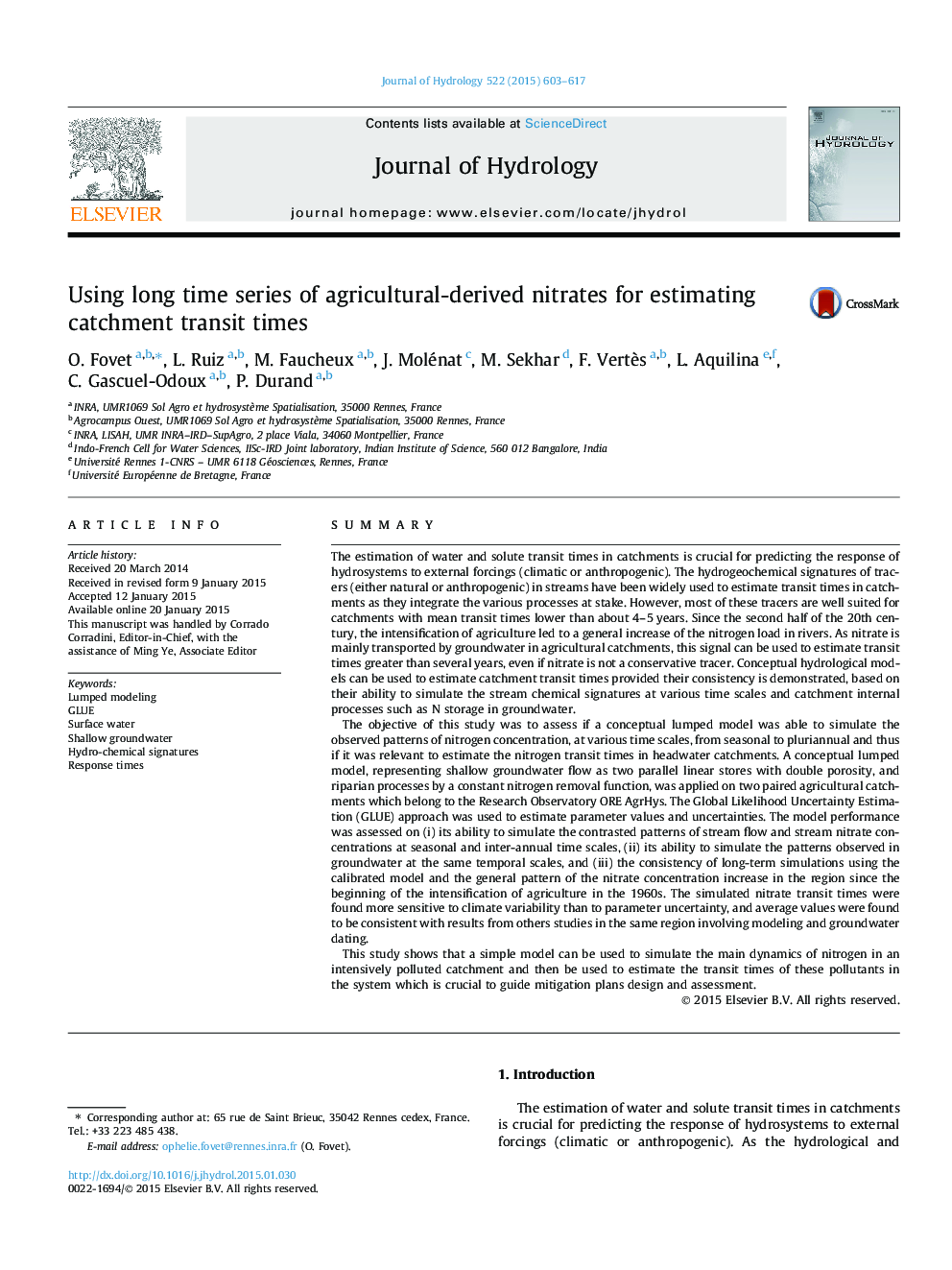| کد مقاله | کد نشریه | سال انتشار | مقاله انگلیسی | نسخه تمام متن |
|---|---|---|---|---|
| 6411368 | 1629928 | 2015 | 15 صفحه PDF | دانلود رایگان |
- We used stream nitrate concentration to estimate transit time in catchments.
- We calibrated a conceptual lumped model on two paired catchments using GLUE.
- The model simulated reasonably nitrate patterns in stream and groundwater.
- Transit time estimations were consistent with previous studies in the same site.
- Transit time was as sensitive to climate variations as to parameter uncertainty.
SummaryThe estimation of water and solute transit times in catchments is crucial for predicting the response of hydrosystems to external forcings (climatic or anthropogenic). The hydrogeochemical signatures of tracers (either natural or anthropogenic) in streams have been widely used to estimate transit times in catchments as they integrate the various processes at stake. However, most of these tracers are well suited for catchments with mean transit times lower than about 4-5Â years. Since the second half of the 20th century, the intensification of agriculture led to a general increase of the nitrogen load in rivers. As nitrate is mainly transported by groundwater in agricultural catchments, this signal can be used to estimate transit times greater than several years, even if nitrate is not a conservative tracer. Conceptual hydrological models can be used to estimate catchment transit times provided their consistency is demonstrated, based on their ability to simulate the stream chemical signatures at various time scales and catchment internal processes such as N storage in groundwater.The objective of this study was to assess if a conceptual lumped model was able to simulate the observed patterns of nitrogen concentration, at various time scales, from seasonal to pluriannual and thus if it was relevant to estimate the nitrogen transit times in headwater catchments. A conceptual lumped model, representing shallow groundwater flow as two parallel linear stores with double porosity, and riparian processes by a constant nitrogen removal function, was applied on two paired agricultural catchments which belong to the Research Observatory ORE AgrHys. The Global Likelihood Uncertainty Estimation (GLUE) approach was used to estimate parameter values and uncertainties. The model performance was assessed on (i) its ability to simulate the contrasted patterns of stream flow and stream nitrate concentrations at seasonal and inter-annual time scales, (ii) its ability to simulate the patterns observed in groundwater at the same temporal scales, and (iii) the consistency of long-term simulations using the calibrated model and the general pattern of the nitrate concentration increase in the region since the beginning of the intensification of agriculture in the 1960s. The simulated nitrate transit times were found more sensitive to climate variability than to parameter uncertainty, and average values were found to be consistent with results from others studies in the same region involving modeling and groundwater dating.This study shows that a simple model can be used to simulate the main dynamics of nitrogen in an intensively polluted catchment and then be used to estimate the transit times of these pollutants in the system which is crucial to guide mitigation plans design and assessment.
Journal: Journal of Hydrology - Volume 522, March 2015, Pages 603-617
